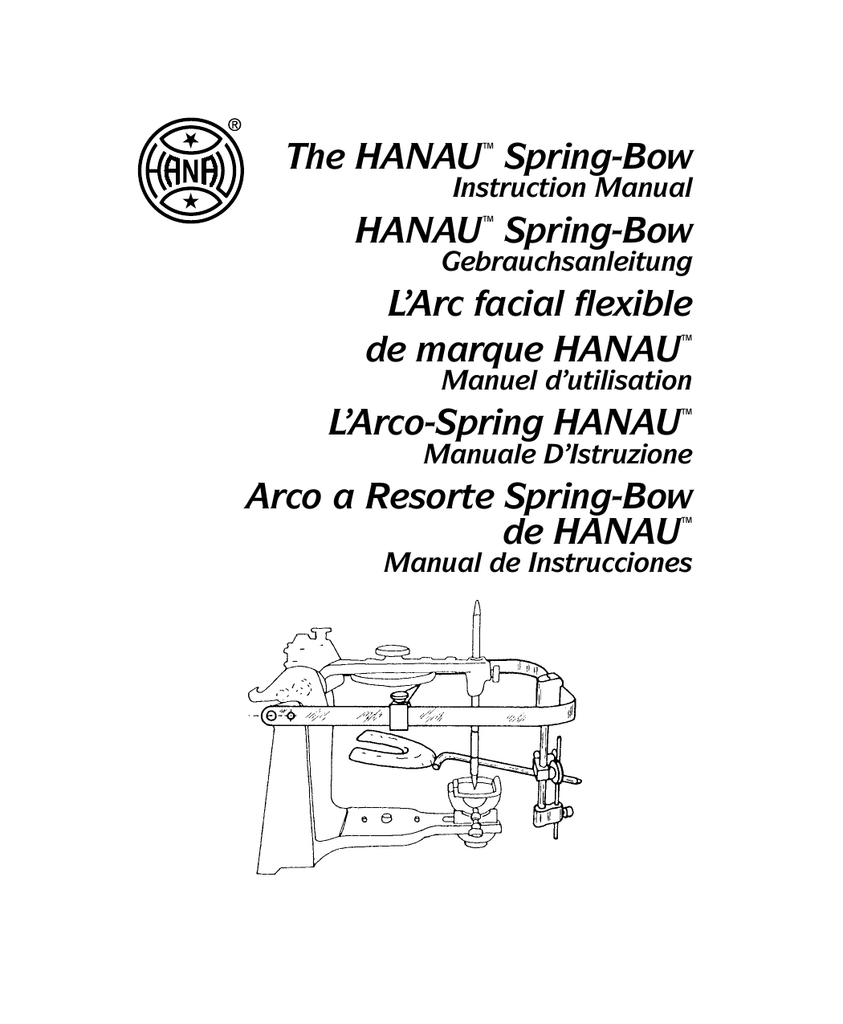
Withdraw the complete assembly from the patient with the Bitefork index rigidly attached to the bow. Grasp the posterior ends of the Bow and release the Earpieces from the meatus. Instruct the patient to “open,” releasing the Bitefork registration from the maxillary dental arch. 3 - continue to hold the right corner of the Bow and tighten the Bitefork clamp to the stem of the Bitefork.
Facilitates in aligning the measuring bow with the horizontal reference plane.D. Allows for transfer clamp assembly to be used with DENAR®, SAM, Whip-Mix articulators. Transfer clamp attaches directly to the articulator which allows for multiple measurements with only one facebow required. Priced to be competitive with most brands of earpiece facebows. Unit may be sterilized by steam autoclave for cross-contamination control. Automatically centers for outstanding accuracy and patient comfort. For indirect or direct mounting to all HANAU™ and DENAR® Articulators (except Hanau Model 145). It is capable of preserving this clinically accepted relationship and transferring it to a HANAU™ or other brand articulator. The HANAU™ Spring-Bow is an earpiece-type facebow, used to capture and record the patient's maxillary arch and its relationship to the external auditory meatus. Mounting platform with built-in cast support Transfer clamp attaches directly to the articulator which allows for multiple measurements with only one facebow required.Īllows for transfer clamp assembly to be used with DENAR®, SAM, Whip-Mix articulators.įacilitates in aligning the measuring bow with the horizontal reference plane. 
Priced to be competitive with most brands of earpiece facebows. Unit may be sterilized by steam autoclave for cross-contamination control. For indirect or direct mounting to all HANAU™ and DENAR® Articulators (except Hanau Model 145).Īutomatically centers for outstanding accuracy and patient comfort.

Hanau Spring FaceBow 010328-000 The HANAU™ Spring-Bow is an earpiece-type facebow, used to capture and record the patient's maxillary arch and its relationship to the external auditory meatus.






 0 kommentar(er)
0 kommentar(er)
